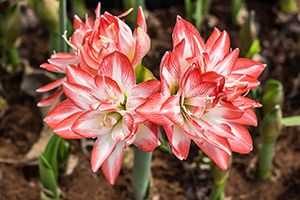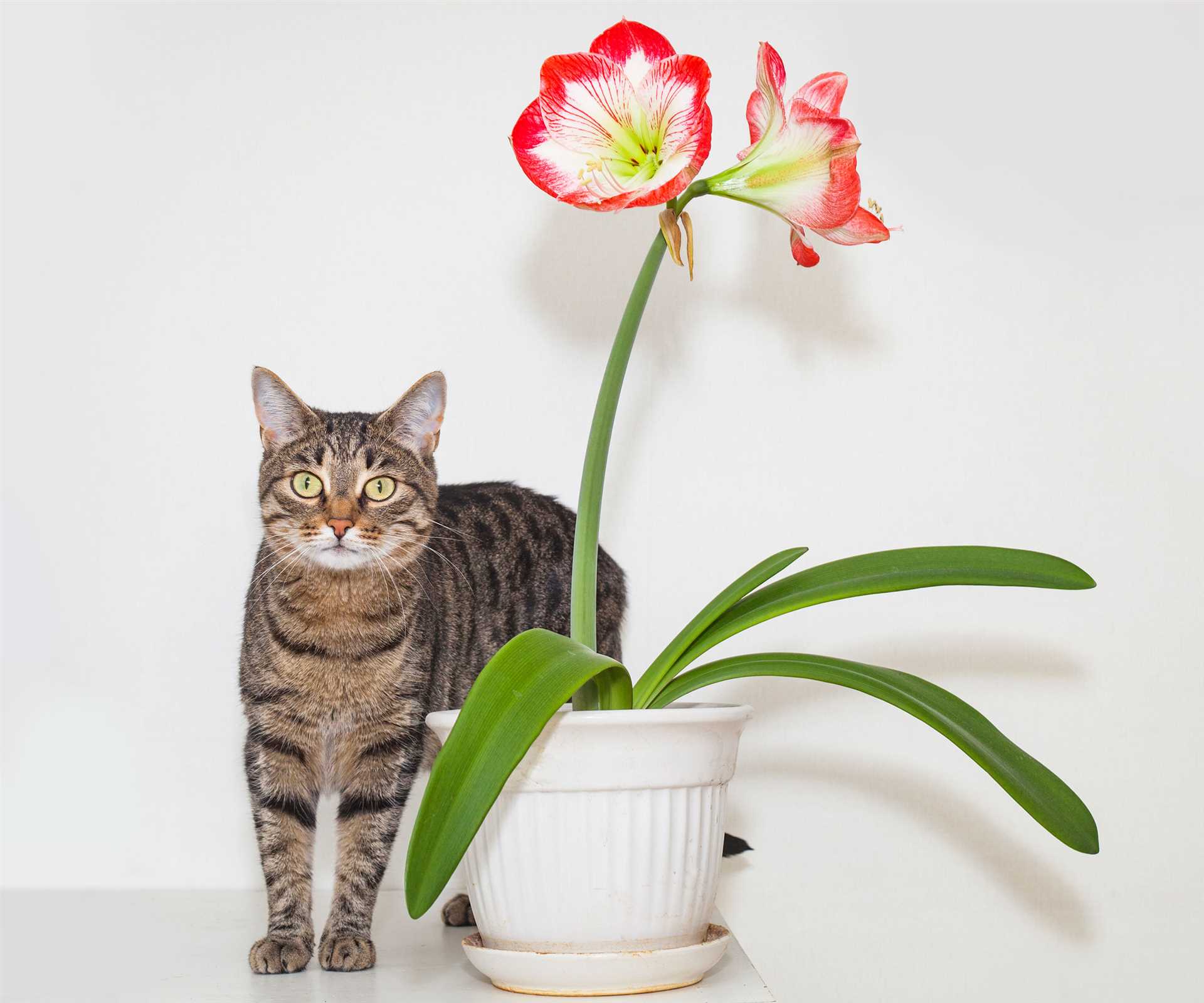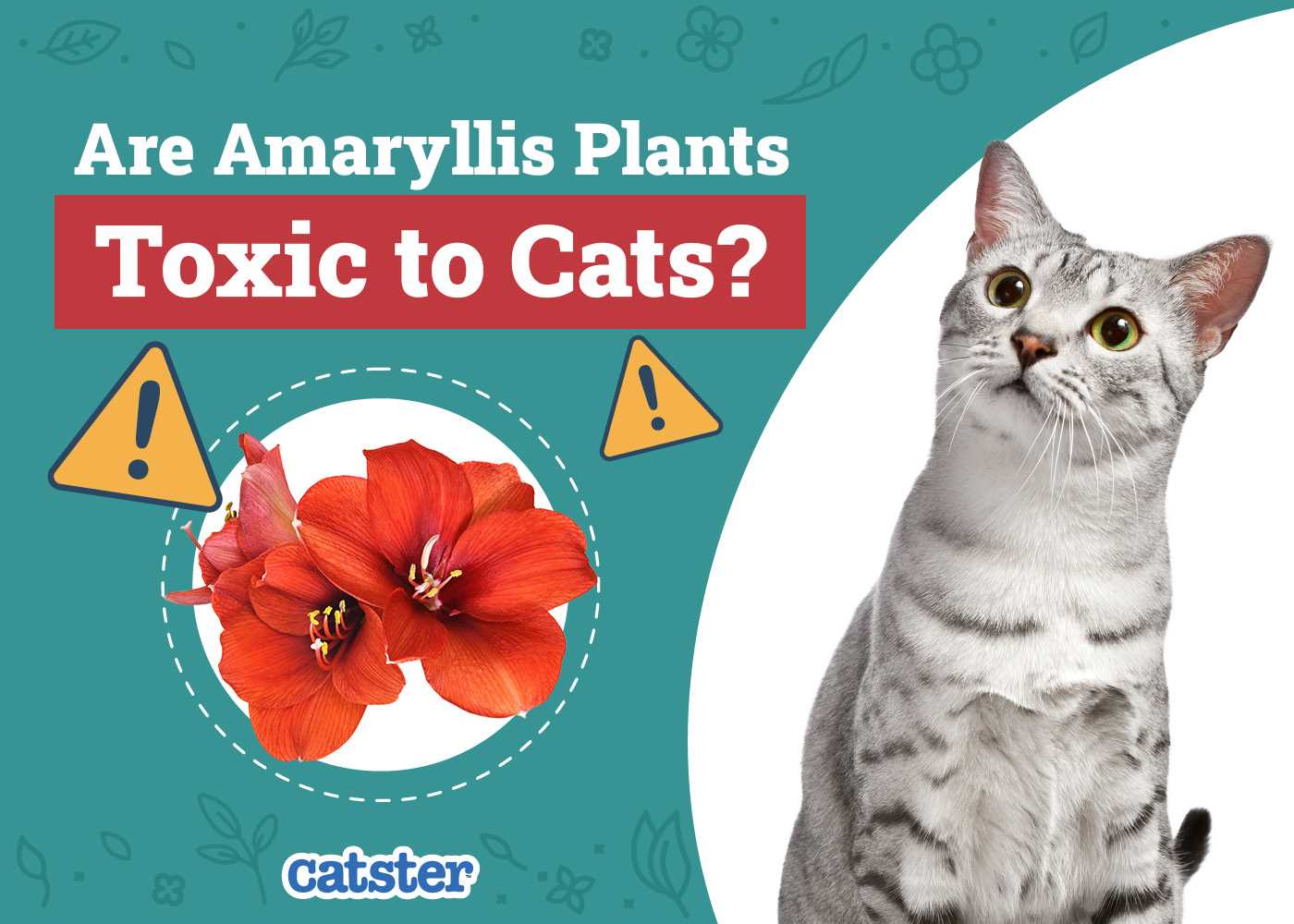As a Scottish Fold who enjoys exploring my surroundings, I’ve come across various plants and their potential risks. It’s important to highlight that certain types of greenery can pose health hazards to our furry friends. Specifically, the bulb of one particular plant can lead to vomiting, diarrhea, and even more severe symptoms if ingested.
For those of us with curious noses and paws, awareness is key. If you suspect that your companion has nibbled on this bulb, it’s wise to consult a veterinarian immediately. Quick action can make a significant difference in ensuring their well-being. Always keep an eye on where you place your houseplants, especially if they are known to be harmful.
In summary, vigilance is crucial when it comes to our safety. Let’s keep our homes and hearts free from hazards that could affect our health. Remember, a little knowledge goes a long way in keeping us all safe and sound!
Are Amaryllis Flowers Toxic to Felines?
Yes, these plants are harmful to us furry friends. Ingestion can lead to symptoms like vomiting, diarrhea, and abdominal pain.
If you suspect your feline has nibbled on any part of the plant, it’s essential to consult a veterinarian immediately. Quick action can prevent more serious issues.
Keep these plants out of reach, or better yet, avoid having them at home if you share your space with a curious kitty. Safety first!
Always check the toxicity of new plants before introducing them to your environment. There are many safe and beautiful alternatives to consider!
Identifying Symptoms of Amaryllis Poisoning in Cats

If you suspect that your furry friend has ingested parts of a certain bulbous plant, watch for specific signs of distress. Symptoms may appear within a few hours and can vary in severity.
Common Symptoms
Vomiting is often the first indication, followed by potential diarrhea. Watch for drooling or changes in appetite; your feline might show reluctance to eat. Lethargy is another red flag, as your companion may seem unusually tired or less playful.
Severe Reactions
In more serious cases, observe for abdominal pain, which can manifest as vocalization or discomfort when touched. Difficulty breathing or rapid heart rate may also occur. If your pet displays any of these alarming symptoms, immediate veterinary attention is necessary.
Early intervention is key to ensuring a quick recovery, so stay vigilant and reach out to your vet if any concerning signs appear.
Immediate Actions to Take if Your Cat Ingests Amaryllis

If I ever munch on a piece of this plant, the first step is to stay calm. It’s crucial to assess the situation quickly. If I show any unusual signs, like vomiting or excessive drooling, my human should act fast.
Contact a Veterinarian
Reaching out to a veterinarian is non-negotiable. A quick call can provide guidance on the next steps and whether a visit is needed. Be ready to share details about how much I ate and any symptoms I’m displaying.
Inducing Vomiting

If the vet advises it, my human may need to induce vomiting. This should only be done under professional guidance. Never attempt this without consulting a vet, as it could make things worse.
Preventing Cat Exposure to Amaryllis Plants in Your Home

To keep my feline friends safe, it’s essential to eliminate any potential risks from toxic greenery. Here are practical steps to ensure that these plants are out of reach:
- Place all plants, especially those known to be harmful, on high shelves or in rooms that are off-limits to pets.
- Consider using hanging planters to keep potentially dangerous plants elevated and inaccessible.
- Regularly check your home for new additions to your plant collection, ensuring they are safe for curious paws.
- Educate your family and friends about the dangers of certain plants, so they can help maintain a safe environment.
It’s also wise to create a pet-friendly garden or indoor space with safe alternatives. Choose varieties that are known to be non-toxic:
- Spider plants
- Bamboo palm
- Boston fern
In case of accidental exposure, be informed about the signs of distress. Having emergency contacts for your veterinarian handy is a must. And if you’re curious about what other substances are safe for my kind, check out is alkaline water safe for cats.
FAQ:
Are amaryllis flowers harmful to cats?
Yes, amaryllis flowers can be harmful to cats. They contain compounds that are toxic to felines, which can lead to symptoms such as vomiting, diarrhea, and abdominal pain. If a cat ingests any part of the plant, it is important to seek veterinary assistance promptly to ensure their safety.
What symptoms should I look for if my cat has eaten amaryllis?
If your cat has ingested amaryllis, you may notice symptoms such as nausea, vomiting, diarrhea, and possibly lethargy. In more severe cases, cats may experience tremors or a drop in appetite. If you observe any of these signs, it is advisable to contact your veterinarian for guidance and possible treatment.
How can I keep my cat safe from amaryllis flowers?
To keep your cat safe from amaryllis flowers, it is best to avoid having these plants in your home or garden. If you do have them, ensure they are placed in areas that are completely inaccessible to your cat. Additionally, educating yourself about other plants that can be toxic to pets can help create a safer environment for your feline friend.
As a Scottish Fold who enjoys exploring my surroundings, I’ve come across various plants and their potential risks. It’s important to highlight that certain types of greenery can pose health hazards to our furry friends. Specifically, the bulb of one particular plant can lead to vomiting, diarrhea, and even more severe symptoms if ingested.
For those of us with curious noses and paws, awareness is key. If you suspect that your companion has nibbled on this bulb, it’s wise to consult a veterinarian immediately. Quick action can make a significant difference in ensuring their well-being. Always keep an eye on where you place your houseplants, especially if they are known to be harmful.
In summary, vigilance is crucial when it comes to our safety. Let’s keep our homes and hearts free from hazards that could affect our health. Remember, a little knowledge goes a long way in keeping us all safe and sound!
Are Amaryllis Flowers Toxic to Felines?
Yes, these plants are harmful to us furry friends. Ingestion can lead to symptoms like vomiting, diarrhea, and abdominal pain.
If you suspect your feline has nibbled on any part of the plant, it’s essential to consult a veterinarian immediately. Quick action can prevent more serious issues.
Keep these plants out of reach, or better yet, avoid having them at home if you share your space with a curious kitty. Safety first!
Always check the toxicity of new plants before introducing them to your environment. There are many safe and beautiful alternatives to consider!
Identifying Symptoms of Amaryllis Poisoning in Cats

If you suspect that your furry friend has ingested parts of a certain bulbous plant, watch for specific signs of distress. Symptoms may appear within a few hours and can vary in severity.
Common Symptoms
Vomiting is often the first indication, followed by potential diarrhea. Watch for drooling or changes in appetite; your feline might show reluctance to eat. Lethargy is another red flag, as your companion may seem unusually tired or less playful.
Severe Reactions
In more serious cases, observe for abdominal pain, which can manifest as vocalization or discomfort when touched. Difficulty breathing or rapid heart rate may also occur. If your pet displays any of these alarming symptoms, immediate veterinary attention is necessary.
Early intervention is key to ensuring a quick recovery, so stay vigilant and reach out to your vet if any concerning signs appear.
Immediate Actions to Take if Your Cat Ingests Amaryllis

If I ever munch on a piece of this plant, the first step is to stay calm. It’s crucial to assess the situation quickly. If I show any unusual signs, like vomiting or excessive drooling, my human should act fast.
Contact a Veterinarian
Reaching out to a veterinarian is non-negotiable. A quick call can provide guidance on the next steps and whether a visit is needed. Be ready to share details about how much I ate and any symptoms I’m displaying.
Inducing Vomiting

If the vet advises it, my human may need to induce vomiting. This should only be done under professional guidance. Never attempt this without consulting a vet, as it could make things worse.
Preventing Cat Exposure to Amaryllis Plants in Your Home

To keep my feline friends safe, it’s essential to eliminate any potential risks from toxic greenery. Here are practical steps to ensure that these plants are out of reach:
- Place all plants, especially those known to be harmful, on high shelves or in rooms that are off-limits to pets.
- Consider using hanging planters to keep potentially dangerous plants elevated and inaccessible.
- Regularly check your home for new additions to your plant collection, ensuring they are safe for curious paws.
- Educate your family and friends about the dangers of certain plants, so they can help maintain a safe environment.
It’s also wise to create a pet-friendly garden or indoor space with safe alternatives. Choose varieties that are known to be non-toxic:
- Spider plants
- Bamboo palm
- Boston fern
In case of accidental exposure, be informed about the signs of distress. Having emergency contacts for your veterinarian handy is a must. And if you’re curious about what other substances are safe for my kind, check out is alkaline water safe for cats.
FAQ:
Are amaryllis flowers harmful to cats?
Yes, amaryllis flowers can be harmful to cats. They contain compounds that are toxic to felines, which can lead to symptoms such as vomiting, diarrhea, and abdominal pain. If a cat ingests any part of the plant, it is important to seek veterinary assistance promptly to ensure their safety.
What symptoms should I look for if my cat has eaten amaryllis?
If your cat has ingested amaryllis, you may notice symptoms such as nausea, vomiting, diarrhea, and possibly lethargy. In more severe cases, cats may experience tremors or a drop in appetite. If you observe any of these signs, it is advisable to contact your veterinarian for guidance and possible treatment.
How can I keep my cat safe from amaryllis flowers?
To keep your cat safe from amaryllis flowers, it is best to avoid having these plants in your home or garden. If you do have them, ensure they are placed in areas that are completely inaccessible to your cat. Additionally, educating yourself about other plants that can be toxic to pets can help create a safer environment for your feline friend.
As a Scottish Fold who enjoys exploring my surroundings, I’ve come across various plants and their potential risks. It’s important to highlight that certain types of greenery can pose health hazards to our furry friends. Specifically, the bulb of one particular plant can lead to vomiting, diarrhea, and even more severe symptoms if ingested.
For those of us with curious noses and paws, awareness is key. If you suspect that your companion has nibbled on this bulb, it’s wise to consult a veterinarian immediately. Quick action can make a significant difference in ensuring their well-being. Always keep an eye on where you place your houseplants, especially if they are known to be harmful.
In summary, vigilance is crucial when it comes to our safety. Let’s keep our homes and hearts free from hazards that could affect our health. Remember, a little knowledge goes a long way in keeping us all safe and sound!
Are Amaryllis Flowers Toxic to Felines?
Yes, these plants are harmful to us furry friends. Ingestion can lead to symptoms like vomiting, diarrhea, and abdominal pain.
If you suspect your feline has nibbled on any part of the plant, it’s essential to consult a veterinarian immediately. Quick action can prevent more serious issues.
Keep these plants out of reach, or better yet, avoid having them at home if you share your space with a curious kitty. Safety first!
Always check the toxicity of new plants before introducing them to your environment. There are many safe and beautiful alternatives to consider!
Identifying Symptoms of Amaryllis Poisoning in Cats

If you suspect that your furry friend has ingested parts of a certain bulbous plant, watch for specific signs of distress. Symptoms may appear within a few hours and can vary in severity.
Common Symptoms
Vomiting is often the first indication, followed by potential diarrhea. Watch for drooling or changes in appetite; your feline might show reluctance to eat. Lethargy is another red flag, as your companion may seem unusually tired or less playful.
Severe Reactions
In more serious cases, observe for abdominal pain, which can manifest as vocalization or discomfort when touched. Difficulty breathing or rapid heart rate may also occur. If your pet displays any of these alarming symptoms, immediate veterinary attention is necessary.
Early intervention is key to ensuring a quick recovery, so stay vigilant and reach out to your vet if any concerning signs appear.
Immediate Actions to Take if Your Cat Ingests Amaryllis

If I ever munch on a piece of this plant, the first step is to stay calm. It’s crucial to assess the situation quickly. If I show any unusual signs, like vomiting or excessive drooling, my human should act fast.
Contact a Veterinarian
Reaching out to a veterinarian is non-negotiable. A quick call can provide guidance on the next steps and whether a visit is needed. Be ready to share details about how much I ate and any symptoms I’m displaying.
Inducing Vomiting

If the vet advises it, my human may need to induce vomiting. This should only be done under professional guidance. Never attempt this without consulting a vet, as it could make things worse.
Preventing Cat Exposure to Amaryllis Plants in Your Home

To keep my feline friends safe, it’s essential to eliminate any potential risks from toxic greenery. Here are practical steps to ensure that these plants are out of reach:
- Place all plants, especially those known to be harmful, on high shelves or in rooms that are off-limits to pets.
- Consider using hanging planters to keep potentially dangerous plants elevated and inaccessible.
- Regularly check your home for new additions to your plant collection, ensuring they are safe for curious paws.
- Educate your family and friends about the dangers of certain plants, so they can help maintain a safe environment.
It’s also wise to create a pet-friendly garden or indoor space with safe alternatives. Choose varieties that are known to be non-toxic:
- Spider plants
- Bamboo palm
- Boston fern
In case of accidental exposure, be informed about the signs of distress. Having emergency contacts for your veterinarian handy is a must. And if you’re curious about what other substances are safe for my kind, check out is alkaline water safe for cats.
FAQ:
Are amaryllis flowers harmful to cats?
Yes, amaryllis flowers can be harmful to cats. They contain compounds that are toxic to felines, which can lead to symptoms such as vomiting, diarrhea, and abdominal pain. If a cat ingests any part of the plant, it is important to seek veterinary assistance promptly to ensure their safety.
What symptoms should I look for if my cat has eaten amaryllis?
If your cat has ingested amaryllis, you may notice symptoms such as nausea, vomiting, diarrhea, and possibly lethargy. In more severe cases, cats may experience tremors or a drop in appetite. If you observe any of these signs, it is advisable to contact your veterinarian for guidance and possible treatment.
How can I keep my cat safe from amaryllis flowers?
To keep your cat safe from amaryllis flowers, it is best to avoid having these plants in your home or garden. If you do have them, ensure they are placed in areas that are completely inaccessible to your cat. Additionally, educating yourself about other plants that can be toxic to pets can help create a safer environment for your feline friend.









